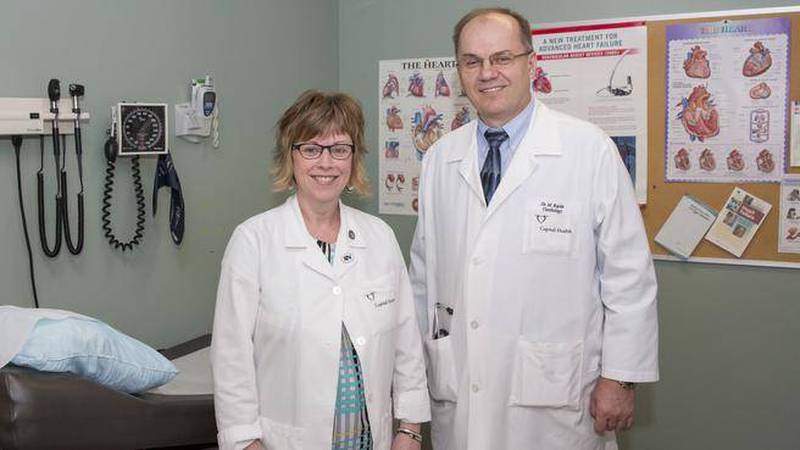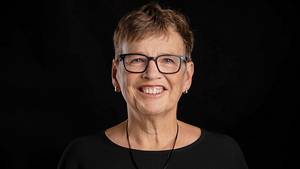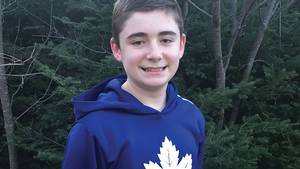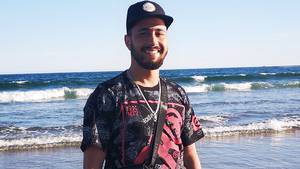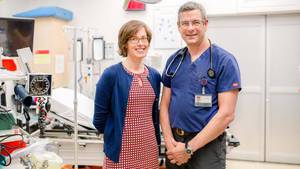 |
 |
| Thanks to the QEII’s Cardiac Transplant Program, Gail Perry has many healthy years ahead of her to spend with her family. |
Gail Perry sees her 35th birthday as a major milestone. After all, the Moncton mother of three lost her own mother and her sister when they were both just 27. “ I feel that living as long as I have is a real accomplishment,” she says.
Her inner strength has played an important role in her own survival. So has the QEII's Transplant Program — the only heart transplant program currently operating in Atlantic Canada. Gail and her family suffer from a rare condition — a defect in a gene that produces a protein called Lamin AC. In healthy people the gene controls a variety of cell functions. In Gail’s family, the malfunction eventually destroys the heart.
A few years ago Gail began a series of difficult steps. First, a pacemaker was implanted with a defibrillator device. As her condition worsened doctors at the QEII installed a left ventricular assist device (LVAD) — an artificial heart that helps blood flow and keeps the patient alive until a donor heart can be located. She needed a heart transplant badly.
“A patient can live a long time with an LVAD,” says Dr. Miroslaw Rajda, a cardiologist and the medical director of the QEII’s Cardiac Transplant Program. “We’ve had a patient on one for five years. But it’s really just a temporary measure; a bridge to transplant.”
For Gail, the LVAD meant being connected with tubes and wires to a backpack that contained a motor to drive the artificial heart; a portable but intrusive lifeline. “My kids’ friends started calling me Robot Mom,” she laughs.
Finding an appropriate donor heart is far from simple. The donor must be of similar size and blood type to the recipient, and they must not have died of any disease that could spread. With a limited number of donor hearts available, the doctors at the QEII carefully choose patients who have the best chance of doing relatively well with a new heart. Each one of the organs is a priceless gift, and the patients who receive them must be in a position to take care of them.
Each patient is screened psychologically to make sure they will look after themselves after the transplant — to eat healthy, not drink in excess or smoke, to have the fortitude to take medications and travel to Halifax for the regular follow-ups that will be necessary for the rest of their lives.
“A transplant is always a last resort,” says Dr. Rajda. “It’s not a cure, it’s a treatment and there is a possibility of serious complications, such as infection or rejection. We always try to get as much as possible out of the old heart first.”
For Gail, nine months passed listening to the reassuring sound of her LVAD motor before the phone rang in the middle of the night. It was 2 a.m. on April 14 — a date that now has an almost mystical significance for her. “They told me they had found a heart and I needed to get to Halifax as soon as possible.” Four hours later she was being prepped for surgery.
Two years later Gail’s life is a little more normal. She looks forward to her regular trips to Halifax for follow-ups at the QEII. “It’s more of a social occasion than drudgery,” she says. “My medical team in Halifax is beyond family.”
“We care very much for our patient population and become very close to all our patients,” says Kate Storm, the Cardiac Transplant Program’s transplant coordinator. “It’s important to get to know them well and build a trusting relationship. We’re going to follow-up in the clinic for the rest of their lives, and they need to know they can call us whenever they have questions or concerns.”
Last fall, Dr. Ian Alwayn was announced as the QEII Foundation Endowed Chair in Transplantation Research. An endowed chair provides stable long-term funding for the research chair holder, allowing further medical advancements to be made in a dedicated area. This research will enhance care for future Atlantic Canadian patients receiving organ transplants at the QEII.
The QEII program conducts around 10 heart transplants every year, a number that could increase substantially if there were enough donor hearts to go around, says Dr. Rajda.
“It’s a tough road for our patients, but in the end, every donor has given these people a gift of life. We get to watch them living life, enjoying life, experiencing things they would have missed otherwise. That means so much.”

